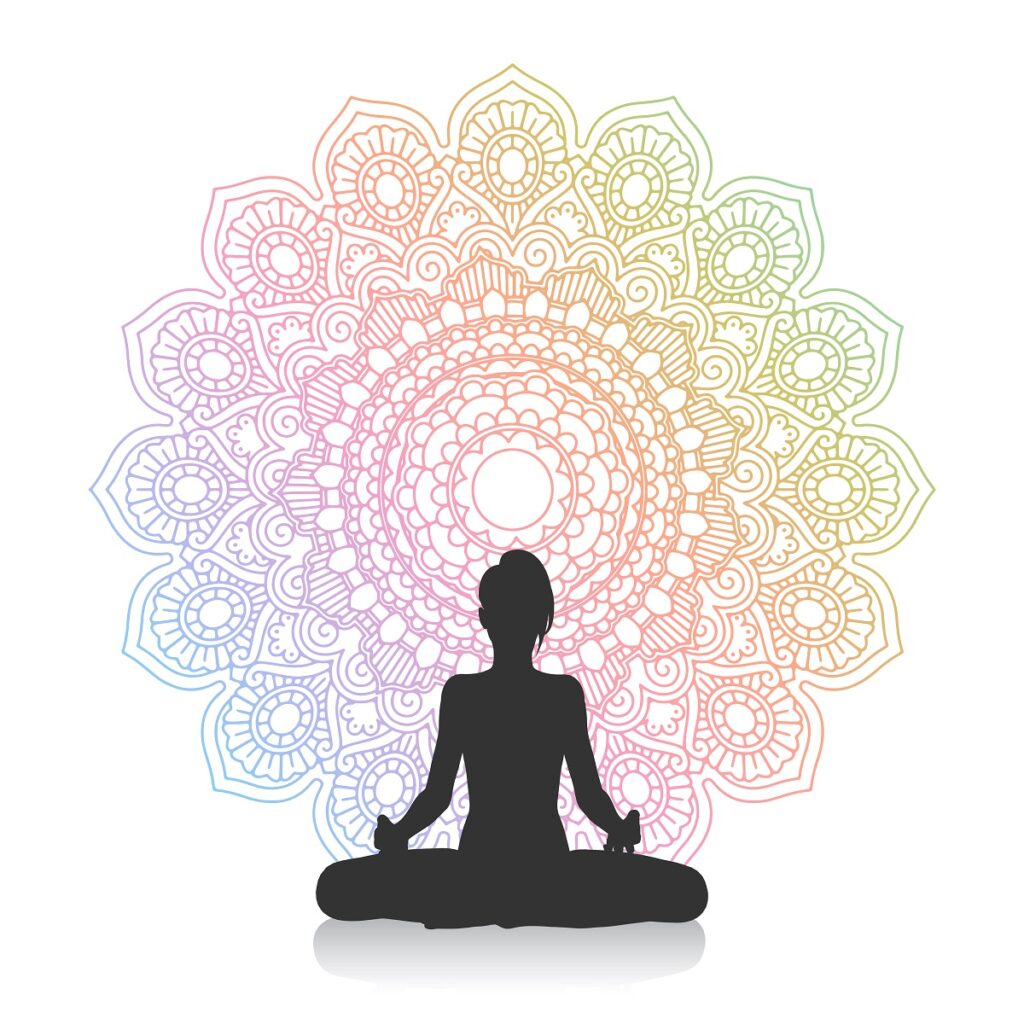In today’s fast-paced world, finding balance in mind, body, and spirit is essential. Yoga, an ancient practice rooted in Indian philosophy, provides a holistic path toward achieving this harmony. From physical strength to mental clarity, yoga offers profound benefits that support both physical health and emotional well-being. This practice, combined with pranayama (breathing techniques), is believed to unlock the potential for a long, healthy life.
1. Enhances Physical Strength and Flexibility
Yoga postures, or asanas, focus on improving body flexibility and strength by stretching muscles and promoting alignment. Poses like Trikonasana (Triangle Pose) and Bhujangasana (Cobra Pose) enhance muscle tone, making the body more resilient and reducing the risk of injury. Over time, regular practice builds core strength, which is essential for balance and stability.
2. Supports Mental Clarity and Focus
One of yoga’s core benefits is its effect on mental clarity.Yoga has powerful mental health benefits. Poses like Padmasana (Lotus Pose) and practices such as meditation clear mental clutter and boost focus. By quieting the mind and reducing distractions, yoga promotes mental clarity, helping individuals maintain sharpness and concentration in their daily lives.
3. Improves Respiratory Health with Pranayama
Pranayama, the controlled breathing techniques in yoga, increases lung capacity and promotes better oxygen exchange. Practices like Kapalabhati (Skull Shining Breath) and Anulom Vilom (Alternate Nostril Breathing) strengthen respiratory function, helping with conditions like asthma. Over time, pranayama improves lung health and promotes calm breathing—a key factor in managing stress and enhancing longevity.
4. Reduces Anxiety and Stress
Yoga has a calming effect on the nervous system, especially through deep breathing and relaxation. Practicing Shavasana (Corpse Pose) at the end of a session helps release physical and mental tension. Regular yoga practice lowers cortisol (stress hormone) levels, promoting a tranquil state that combats anxiety and helps prevent issues like high blood pressure and insomnia.
5. Enhances Cardiovascular Health
Yoga indirectly supports heart health by reducing stress and improving circulation. Flow-based practices like Vinyasa (breath-synchronized movement) maintains steady heart rates and promotes blood flow. Surya Namaskar (Sun Salutation), a full-body sequence, strengthens the heart, enhances circulation, and lowers heart disease risks. The cardiovascular benefits of yoga contribute to reducing risks of heart-related diseases.
6. Boosts Digestive Health
Yoga stimulates the digestive system by gently massaging internal organs, promoting better digestion and easing discomfort. Poses like Pawanmuktasana (Wind-Relieving Pose) and Paschimottanasana (Seated Forward Bend) alleviate gas, bloating, and constipation. A balanced digestive system is crucial for nutrient absorption ,immunity, and detoxification, making yoga a natural remedy for various digestive issues.
7. Strengthens Immunity
Yoga’s positive effects on digestion, respiration, and stress relief strengthen the immune system. Poses like Bhujangasana (Cobra Pose) and Tadasana (Mountain Pose) stimulate the lymphatic system, helping to filter toxins and boost immune response. This holistic approach supports the body’s natural defenses, making it more resilient against illnesses.
8. Provides Chronic Pain Relief
Yoga offers gentle, effective relief for those with chronic pain, such as arthritis or back pain. Postures like Balasana (Child’s Pose) and Setu Bandhasana (Bridge Pose) ease tension in muscles and promote relaxation. For many, yoga helps manage pain without heavy reliance on medication, providing natural, lasting relief.
9. Promotes Hormonal Balance
Yoga influences the endocrine system, which regulates hormones. Practicing poses like Sarvangasana (Shoulder Stand) and Halasana (Plough Pose) stimulates thyroid function, while Baddha Konasana (Bound Angle Pose) supports reproductive health. Balanced hormones contribute to improved mood, energy levels, and overall well-being.
10. Paves the Path for Longevity and Vitality
Yoga and pranayama not only improve health but also set the foundation for a long and fulfilling life. Regular practice enhances the body’s resilience to aging by promoting vitality, increasing cellular health, and reducing the wear and tear associated with stress and chronic diseases. Pranayama, in particular, enriches oxygen supply to cells, slowing down the body’s natural aging process and fostering a state of mindfulness and peace.
Yoga Mudras for Specific Health Needs
In addition to the above benefits, specific mudras (hand gestures) support unique health conditions and stages of life:
– For PCOS: Yoni Mudra fosters calm and balances hormones, while Surya Mudra supports metabolism, aiding those managing PCOS. Practicing these mudras daily can help reduce stress and hormonal imbalance.
– During Menstruation: Apana Mudra promotes the downward energy flow, relieving cramps and tension, while Balasana (Child’s Pose) relaxes the lower back and alleviates pain.
– For Pregnancy: Garbh Mudra nurtures the bond between mother and child, promoting calmness, while Baddha Konasana (Bound Angle Pose) opens the hips and strengthens pelvic muscles, reducing back pain and improving flexibility.
– For Office Workers: Gyan Mudra enhances focus, while Prithvi Mudra boosts energy and reduces fatigue. Seated Tadasana (Mountain Pose) stretches the spine, helping counteract the effects of prolonged sitting and relieving tension in the back and shoulders.
How Yoga and Pranayama Pave the Path for Longevity
Yoga and pranayama are often considered gateways to achieving a sense of “immortality” in Indian philosophy, which refers to a prolonged, healthy life rather than literal immortality. By balancing the mind, body, and spirit, yoga supports holistic health, reduces stress, and increases mental resilience. Pranayama, the practice of controlled breathing, nourishes cells with oxygen, delaying cellular aging. Together, they foster a mindful life—one that enables an individual to live with clarity, joy, and health.
The practice also instills a sense of self-discipline, which encourages positive lifestyle choices. When practiced consistently, yoga promotes mindfulness, reducing impulsive behaviors and fostering habits that contribute to well-being. This combination of mindfulness, physical fitness, and inner calm cultivates a balanced life, supporting physical health and mental peace.
Yoga se hi hoga, embrace it!
Yoga’s impact goes far beyond flexibility. Through asanas, pranayama, and mudras, yoga enhances physical health, mental clarity, and emotional resilience. In an age where health challenges are complex, yoga provides a holistic, effective, and accessible approach to wellness. Embrace yoga to experience a journey of balance, vitality, and well-being—a step toward a life of peace, longevity, and inner harmony.


